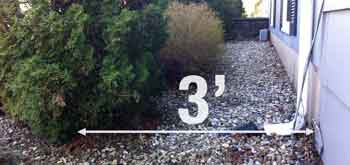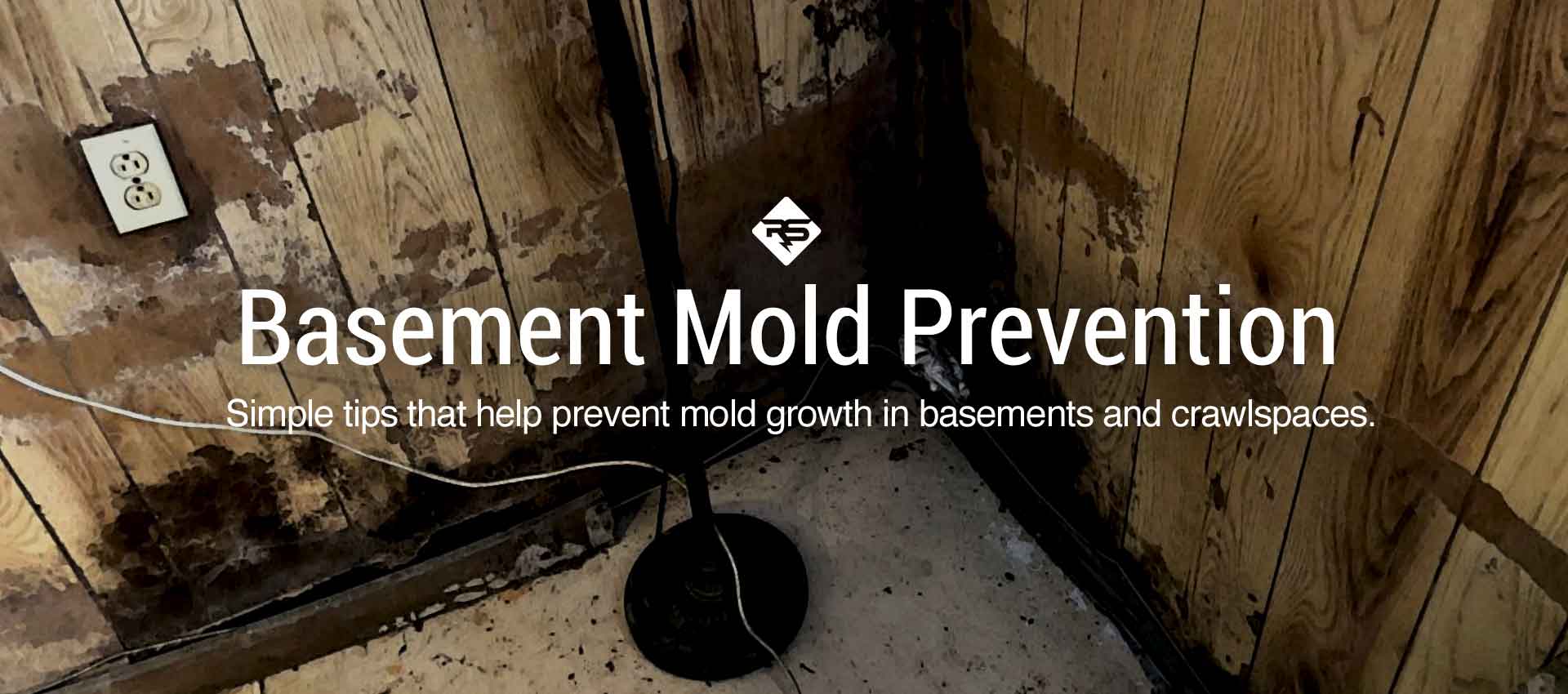Molds play a vital role in nature by breaking down plant and animal matter but when allowed to flourish inside a home it can cause a variety of health issues. Invisible mold spores that permeate indoor air can cause nasal stuffiness, sore throats, allergies, asthma, airways infections, and in extreme cases serious lung infections. Wouldn’t you know it, children are also at a greater risk. Preventing the growth of mold in basements and crawl spaces can go a long way towards improving the overall health of your home.
According to the National Academy of Medicine (NAM), “Since about 1980, asthma prevalence and asthma-related hospitalizations and deaths have increased substantially, especially among children. Recent studies have suggested that indoor exposures – to dust mites, cockroaches, mold, pet dander, tobacco smoke, and other biological and chemical pollutants – may influence the disease course of asthma.”
“More than 6 million children in the U.S. have asthma. Genes are known to play a role, and so does the home environment. Childhood asthma has been linked to indoor mold growing in a child’s home as a result of moisture problems such as water leaks.” – National Institutes of Health (NIH)
Use All-Natural Mold Cleaning Products
There is not much that is more nauseating than a musty smelling basement. Just the thought of having to spend time down there can cause dread. And when upstairs space is limited, a foul-smelling basement is never an ideal space for extra storage. Musty odors and mildew ruin clothing, furniture, carpeting, toys, air conditioners, household knick-knacks, sports equipment, fabrics, etc.
There are several different ways to remove mold in basements. Most homeowners reach for the bottle of bleach and get to work. However, bleach requires direct contact with mold to kill it. When mold is found on porous basement materials, like drywall, concrete, or fabric, bleach is not as effective because it cannot reach the mold below the surface. Bleach is classified as hazardous and if you choose to use it you will need to ensure the basement is properly ventilated, that you wear protective gloves and goggles, and that you never mix bleach with ammonia or other cleaning agents.
Alternatively, you can choose to remove visible mold in basement safely and effectively using BioZap Mold & Mildew Cleaner. BioZap is a 100% all-natural cleaning product made from the Australian Tea Tree Oil. Tea tree oil has long been considered an antiseptic, anti-microbial, and antifungal agent in Australia and the popularity and use of the oil has grown substantially worldwide (still awaiting testing by US EPA). Tea tree oil evaporates very slowly (low vapor pressure). A single application will continue to work, long after it is applied.
If visible molds are not present, but a musty odor persists than place a jar(s) of BioZap Air Purifier & Deodorizer in the basement and allow vapors of the all-natural oil to permeate throughout the room. The released vapors of the tea tree oil will break down mold spores floating in the air and deep inside porous surfaces, leaving your basement smelling clean for months to come.
Skeptical? Read what people like you have had to say about BioZap.
Waterproof Below Grade Concrete
Moisture problems and mold growth go hand in hand so eliminating the source is the key to successful mold prevention. Seepage normally occurs in basements when the ground water level rises around foundations after a heavy rain. But most moisture is drawn in as invisible water vapor through the porous concrete floor and walls.
Mold and mildew, fungi, bacteria, and dust mites flourish in high humidity (over 60%). Your basement or foundation slab is by far the single largest source of humidity in your home. The average basement (or slab) lets in over 15 (10) gallons of water each day – several times more than showering and cooking combined.
The best way to reduce high humidity and condensation in basements is to deep-seal your concrete against moisture. Sealing the basement slab (and below grade walls) against water vapor transmission and water seepage is the key to preventing mold in basements. Not just any sealer will do the trick.
RadonSeal Penetrating Concrete Sealer will seal your concrete internally and permanently against water and water vapor. Moreover, it is strong enough to seal even against radon, which is a single-atom gas. (The only sealer guaranteed to seal against radon gas.) Since 1997, RadonSeal has been successfully used for sealing concrete in thousands of residential and commercial basements, foundation slabs, as well as outdoor concrete areas. Additionally, RadonSeal is resistant to hydrostatic pressure, meaning that it cannot be pushed out by high water pressure.
Waterproofing paints sold in stores are of little help. Sooner or later, all paints will lift and peel. The film cannot hold up against hydrostatic water pressure and gets easily lifted by efflorescence naturally activated by water in the concrete. And the paints cannot be used on concrete floors, the major source of water vapor seepage.
Read about the technology behind RadonSeal.
Repair Basement Cracks and Seal Gaps Airtight
Now that we have a solution for waterproofing the porous concrete it is time to turn our attention to openings in the concrete such as, cracks, gaps, sump pits, loose sump pump covers, floor-to-wall gaps, pipe protrusions, etc. Any opening where water vapor or water could pass through should sealed airtight!
Foundation Wall Cracks – Settling cracks in basement walls will eventually lead to water seepage. Instead of grinding and stuffing them with hydraulic cement, which will get loose in couple years, you can repair them easily and permanently with do-it-yourself crack injection kits.
Basement Floor Cracks – When water pressure underneath the basement floor becomes too high, water be pushed through any cracks. Even a small hairline crack can cause your basement to flood (see video). Cracks, even of the hairline variety, can be easily repaired with concrete floor repair kits. There is no need to grind out the cracks.
Control Joints, Floor-to-Wall Joints – They let in water vapor and after a heavy rain, may cause basement flooding. But moving control joints require a flexible repair. You can use a self-leveling concrete caulk but that will eventually peel. For a much stronger and long-lasting repair, use joint sealant with flexible epoxy.
Pipe Protrusions, Form Ties – Voids around conduits, pipes, and rusting form ties should be sealed properly by injecting expanding urethane foam.
Sump Pits – They let in lots of water vapor and radon gas. Caulk around loosely fitting covers and pipes, or install a proper cover for an exposed sump hole.
Crawlspace – Exposed earth in a crawlspace is a huge source of moisture, as well as radon. Properly install a high-density polyethylene liner or have a +3″ slab poured (shotcrete) over a water vapor barrier. Allow the concrete to cure for 28 days and then seal it using RadonSeal concrete sealer.
Use Simple Exterior Waterproofing Methods
Exterior waterproofing is the first line of defense! Much can depend on how a house is sitting on the property but using simple exterior waterproofing methods, for some, can go a long way to drying out a basement.
Landscaping – Shrubbery around the foundation may look pretty and help a home stay cool during the summer but when they are planted too close to the foundation it can cause serious issues. Shade slows down moisture evaporation in the soil leaving the earth around the foundation consistently damp.
Roots seek damp soil and years of root growth against your foundation can create channels for which water will easily find. Shrubs should be planted and spaced at least 3′ away from the foundation (pictured).

Gutters – Obvious! Rain gutters should inspected and maintained regularly so that they are in proper working condition. Spend the $10 and install downspout extensions that will help channel water away further from your foundation. Make sure the extension is long enough so that the water can be discharged at least 5′ away from the foundation.
Grading – Land grading that has flattened from rain and snow or improper grading that is sloping towards the foundation must be corrected by creating a slope. The consensus amongst experts is to obtain a 5% rate slope about a 6″ drop for the first 10 feet.
Be Proactive
Aside from the physical work the most important key to long-term mold in basement prevention is to be a proactive homeowner and care about your investment, your well-being, and the health of your family. Moisture and mold in basement can be prevented without the need to install expensive basement waterproofing systems.
Simple repairs can go a long way and just because you don’t have a moisture issue today, doesn’t mean you can have one tomorrow! Those “once in a lifetime” storms now seem to be occurring every couple of years and the homeowner who procrastinates is at greater risk of the damp basement blues.

